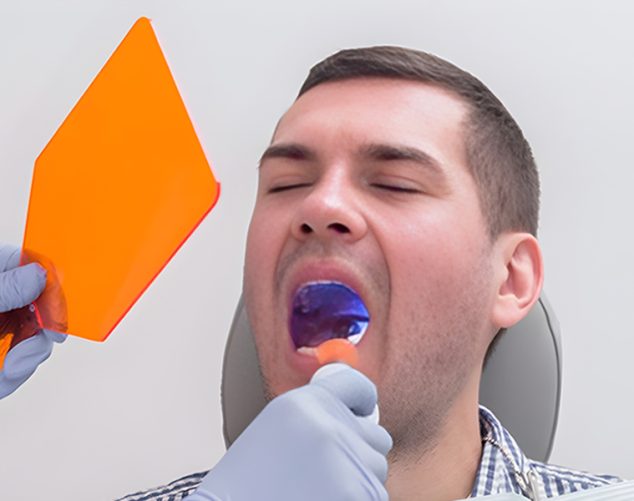
Why You Might Need a Tooth Pulled and How to Prepare
If the idea of getting a tooth pulled makes you uneasy, you’re not alone. But sometimes, tooth extraction in Brampton, ON, becomes the healthiest choice for your smile. Whether it’s severe decay, trauma, or overcrowding, your dentist isn’t recommending removal unless it’s the last option on the list. Understanding why extractions happen—and how you can prepare—can ease anxiety and help you heal faster afterward.
Familiar Dental Issues That Lead to Tooth Extractions
Tooth removal isn’t always a result of poor oral hygiene. In fact, there are a number of valid, often unavoidable reasons that your dentist may recommend extraction.
Here’s when pulling a tooth might be necessary:
- Severe Tooth Decay
- When cavities go untreated, the infection can spread into the pulp and nerves. Once decay reaches the root, a simple filling or root canal may no longer work.
- Gum Disease
- Advanced periodontal disease weakens the tissue and bone that support your teeth. When teeth become too loose, they may need to be removed to protect neighboring ones.
- Crowded Teeth
- If your mouth doesn’t have enough room, extractions can help align your bite before braces or Invisalign.
- Broken or Cracked Teeth
- Not all broken teeth can be saved. If the fracture reaches below the gumline or into the root, pulling may be the only option.
- Impacted Wisdom Teeth
- These often don’t erupt properly and can lead to infection, pain, or damage to adjacent teeth.
In many of these cases, a dentist can provide quick relief and pave the way for future restoration like bridges, implants, or dentures.
Signs and Symptoms Indicating a Tooth Needs to Be Removed
Sometimes, the signs are obvious—other times, they creep up on you.
If you’re experiencing any of the following, it might be time to schedule an exam:
- Sharp pain when biting or chewing
- Swelling or pus around a tooth
- Tooth movement or looseness
- Persistent bad breath or bad taste
- Discoloration or darkening of a tooth
- Gum inflammation that doesn’t respond to brushing and flossing
Pain isn’t always the only indicator. Subtle changes, like difficulty flossing between teeth or avoiding one side while chewing, might mean a problem is brewing.
How Tooth Decay Can Progress to Extraction
Tooth decay doesn’t happen overnight. It starts as a small cavity—often painless—and spreads deeper. Once bacteria reach the inner pulp, inflammation kicks in. That pressure causes pain and sensitivity.
From here, two things can happen:
- Root Canal Option – If caught early, a root canal can save the tooth.
- Too Late? – If the infection spreads to the bone or causes an abscess, extraction becomes the safest route.
This domino effect highlights why routine cleanings at a local dental office or a Brampton dental office are so important. Early treatment means less invasive treatment.
What to Anticipate During the Tooth Extraction Process
Your dentist will gently guide you through each step of the procedure—but here’s a general idea of what to expect on extraction day:
- Numbing the Area
- A local anesthetic ensures you feel pressure but no pain. Sedation options are available if you’re feeling especially nervous.
- Loosening the Tooth
- Using specialized instruments, the dentist gently rocks the tooth to loosen it from the ligaments and bone.
- Removing the Tooth
- Once loose, the tooth is lifted out. If it’s impacted or broken, your dentist may need to section the tooth for easier removal.
- Closing the Site
- Some extractions require a few stitches. Your dentist will also place gauze over the socket to control bleeding.
The actual removal is often faster and more comfortable than patients expect. If pain is unbearable or you’ve got a dental emergency, contact a local emergency dentist or an emergency dentist in Brampton for urgent care.
The Role of X-rays in Planning a Tooth Extraction
X-rays aren’t just routine; they’re crucial.
They help the dentist:
- Evaluate the root structure and position
- Assess bone density and any signs of infection
- Plan how to safely remove the tooth without damaging nearby nerves or sinus cavities
If you’re someone who needs their wisdom teeth removed or you’ve got a tooth that’s broken near the gumline, X-rays will guide the strategy. They also reduce surprises mid-procedure.
So don’t skip those pre-op images—they’re essential for a smooth, safe experience.
Aftercare Tips for a Smooth Recovery Post-Extraction
Your job doesn’t end after the tooth comes out. How you care for your mouth afterward impacts how fast you heal—and how good you feel doing it.
Here’s your post-extraction survival checklist:
Do:
- Keep the gauze in place for 30–45 minutes
- Apply a cold pack on the cheek to reduce swelling
- Consume soft foods like yogurt and smoothies for the first 24–48 hours
- Rest and avoid strenuous activity
- Sleep with your head elevated the first night
Don’t:
- Rinse or spit forcefully for 24 hours
- Use a straw—it can dislodge the clot
- Smoke or vape (they slow healing)
- Try not to touch the socket with your fingers or tongue
As you recover, slight oozing and discomfort are normal. However, call your dentist if you notice excessive bleeding, worsening pain, or signs of infection like fever or pus.
Taking care of your extraction site will protect the clot that forms—critical for healing and preventing dry sockets.
Final Thoughts
Getting a tooth pulled might sound intimidating, but in reality, it’s often the key to relieving pain, fighting infection, or making way for a healthier mouth. Understanding the reasons behind teeth pulling helps you make informed decisions—and being prepared reduces fear.
At Royal West Dentistry, we make sure you feel confident every step of the way. From the first X-ray to the final check-in, your comfort, safety, and long-term oral health always come first.